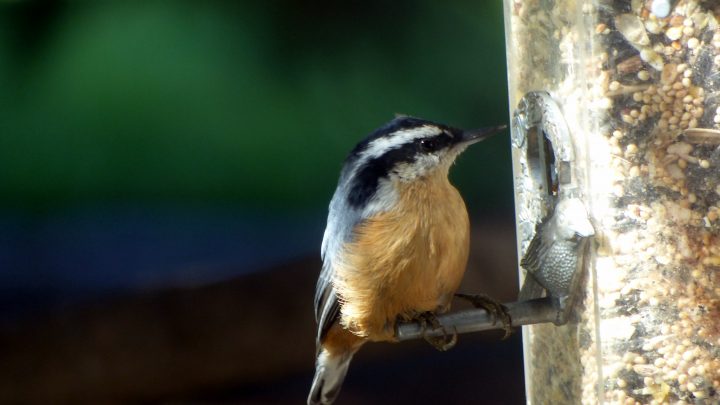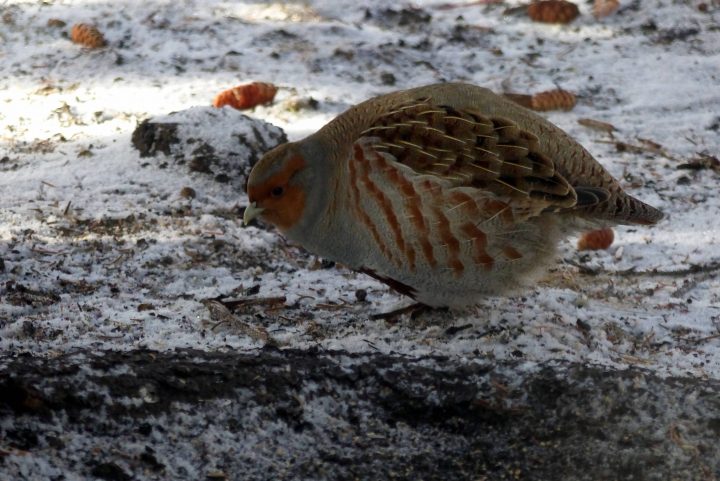Bird watching — a.k.a. birding — is an enormously popular hobby in Canada and it seems to grow every day.

Many people feed birds because they believe they are helping their feathered friends. Studies have shown wild birds that have access to supplemental food sources tend to fare better than birds that don’t, especially in winter.
Winter feeding
Winter feeding should offer food that is higher in fat because birds need to move more in order to stay warm and survive the cold.
There are many different types of feeders including open tray feeders, tube feeders, suet baskets and mesh socks.
Feeders should contain a mixture of seed (such as black oil sunflower seeds), hulled peanuts or peanut hearts, thistle seed, white millet seed and peanut butter.
Suet suspends a variety of ingredients — seeds, fruit, oats, peanut butter, corn meal and meal worms — in fat. Suet is an excellent source of energy and comes in slabs to be placed in metal baskets but you can also find it in cups and tubes.
Bird feeders will almost certainly attract squirrels and often, these crafty critters will figure out a way to carry off an entire seed feeder or suet slab. A small chain or sometimes a thicker, rubber twist tie will help keep feeders secure.
You may not see many birds at the feeders at first, but with time, you will undoubtedly see an increase in the number and variety of birds that will visit.

Get daily National news
In addition to sparrows, nuthatches, and chickadees, you’ll likely also attract several varieties of larger birds such as blue jays, crows and magpies.
Pigeons and partridges are ground feeders, eating what falls from the feeders. If you aren’t fussed that these guys are coming to dine in your yard, sprinkle some extra seed on the ground for them.
Saving more for the little guys
It is possible to buy feeders built with an outer cage so squirrels and larger birds can’t get through, leaving more seed for the smaller birds.
The big problem: mice
A cautionary note: bird feeders also often attract mice. If you see mice or any signs of their presence, such as tiny footprints in the snow, you might want to reconsider feeding altogether. The last thing anyone wants is an out-of-control mouse population in their yard. And if there’s a way for them to get into your house, they’ll find it.
Where to find quality food
High-quality wild bird food can sometimes be found in pet, department and grocery stores — but buying your feed at a specialty bird store might be preferable. They will probably have more selection and better-quality food and might even produce their own seed mixes and suet.
Another advantage of shopping at bird stores is being able to engage with knowledgeable staff that are eager to talk birding and offer advice. Most wild bird stores also have accessories including feeders, houses, baths, binoculars and books.
Sterilize feeders a few times a year
Tube-style feeders as well as suet baskets should be cleaned and sterilized several times a year to prevent the spread of disease.
After washing with hot, soapy water, dry the feeder. Before refilling and putting it back out, set the feeder in bright sunlight for several hours so the sun’s ultraviolet rays can kill any germs.
It’s more difficult to clean wooden tray feeders but you should make the effort. Scrape any droppings, dirt, old seed, or mold off the feeder and scrub it with hot, soapy water. Dry it as best you can and again, leave it in the sun for several hours.
Unfortunately, germs can hide in shaded cracks and the ultraviolet rays can only kill germs that they contact directly. Change the position of the feeder to give it as much sun exposure as possible before rehanging it in an area that provides protection from wind, snow and rain.







Comments